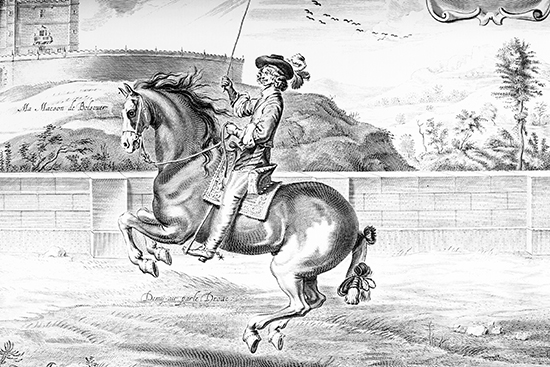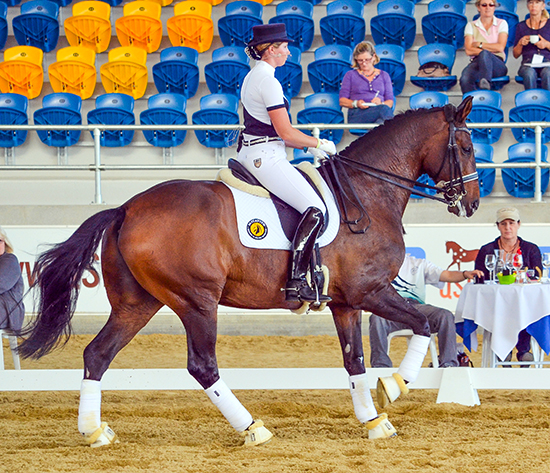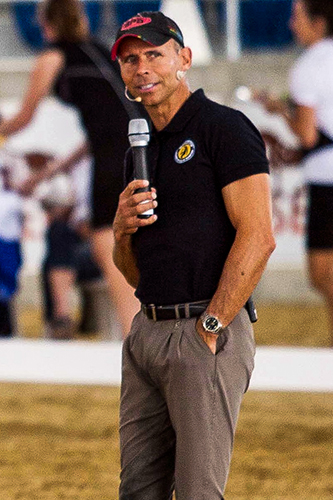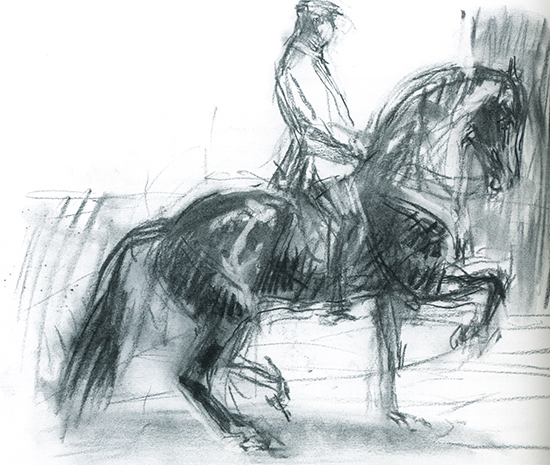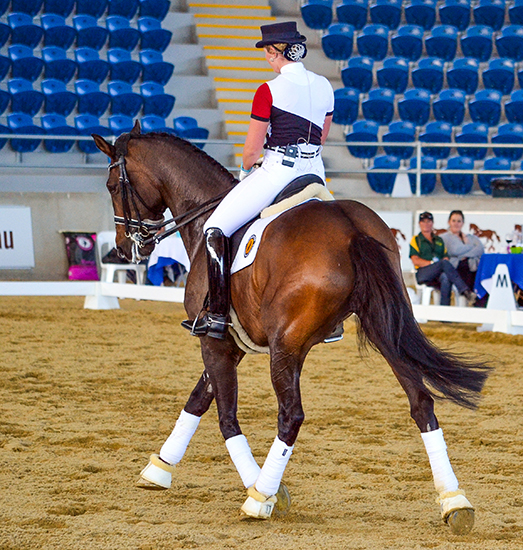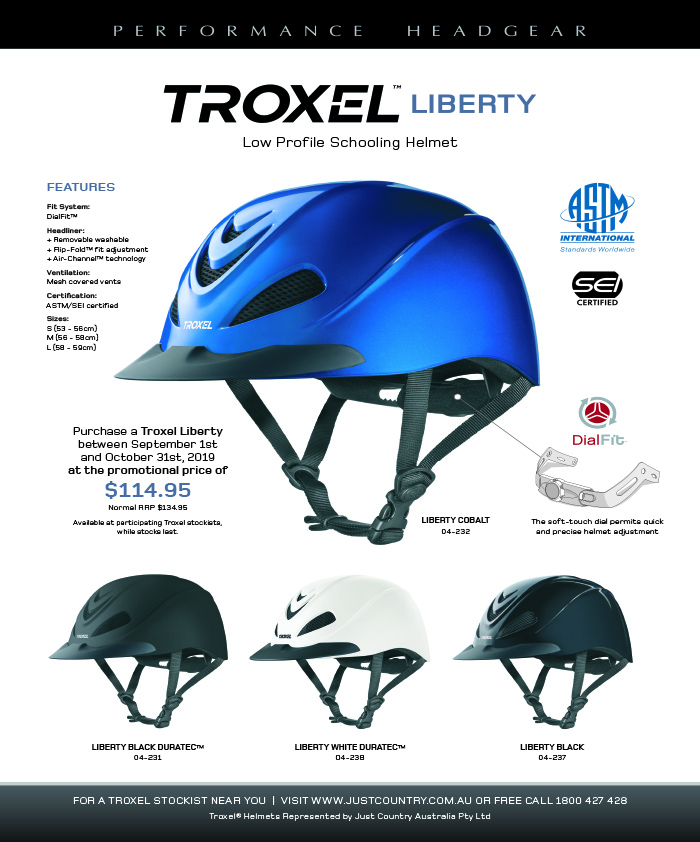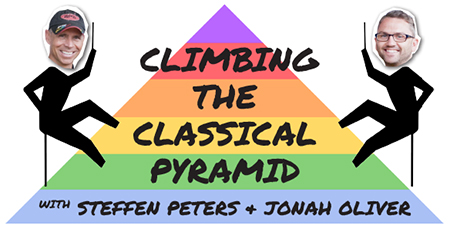 The Ultimate Masterclass: Step 6
The Ultimate Masterclass: Step 6
STORY – KAREN HOSIE PIX – TRICIA OSBORNE & JENNIFER HUBBARD
Greetings and congratulations on your intellectual perseverance, for you have finally arrived at the top of the classical dressage training pyramid: collection. Collection is truly the ultimate prize for the dedicated and disciplined. Over the past few months THM has explained each of the successive steps of the pyramid by profiling horse and rider combinations from the highly successful Ultimate Masterclass conducted by Olympic rider and trainer Steffen Peters and sports psychologist Jonah Oliver. In the last issue we followed the progress of Gary Lung and his horse GB Winchester as they concentrated on the fifth step of the pyramid: Straightness. A quick primer from last month’s lesson:
– All horses are naturally crooked to some degree.
– Before straightness can be achieved, the previous levels of the training pyramid (relaxation, balance, contact, and impulsion) must be adequately in place.
– Always straighten the horse by bringing the forehand in front of the hindquarters. Never straighten the horse by pushing his hindquarters over behind his shoulders.
– Straightness is the pre-cursor to collection in that it teaches the horse to adequately carry his weight equally on both sides.
Step Six: Collection – Increased engagement, Lightness on the forehand & Self-carriage
As you are no doubt aware, The Ultimate Masterclass is groundbreaking in that it combines both the physical issues of training the dressage horse and rider and addresses the mental issues they encounter in competition as well. Last month Jonah Oliver explained the concept of adversity training and how to develop the mental focus that separates successful competitors from their rivals.
Collection is the sixth, and final, level of the classical dressage training pyramid. When a horse is collected, his weight shifts from his forehand to his hindquarters. This distributes his weight more evenly between all four legs. A collected horse steps further underneath himself and exhibits greater flexion in the hocks, resulting in shorter steps which are suspended and energetic. The poll is now the highset point and the forehand is elevated. The collected horse is expressive and elegant in its movement. Collection can only be achieved through progressive and correct training. This requires a great deal of patience, dedication and time to allow the horse to adequately develop and strengthen the hindquarters.
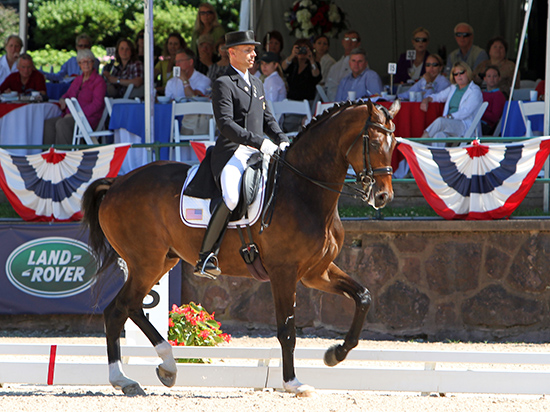
Steffen and Legolas pic Dressage-News Kenneth Braddick
As training progresses and collection improves so will the horse’s balance and self-carriage in all three gaits. It might be useful at this point to explain the difference between collected exercises and collecting exercises. Collecting exercises are training exercises where the horse’s head and neck are generally lower, this allows the horse to round and use his back more. Collected exercises are the result of correct training when the horse is able to hold his head and neck higher and the horse demonstrates self-carriage. Collecting exercises encourages the horse to carry more weight on his hindquarter, these include the halt, half-halt, rein back (at the early stage), and shoulder-in. Collected exercises include collected variations of each gait and encompass the collected canter, collected trot, collected walk, piaffe, passage and canter pirouettes.
story continues below advertisement
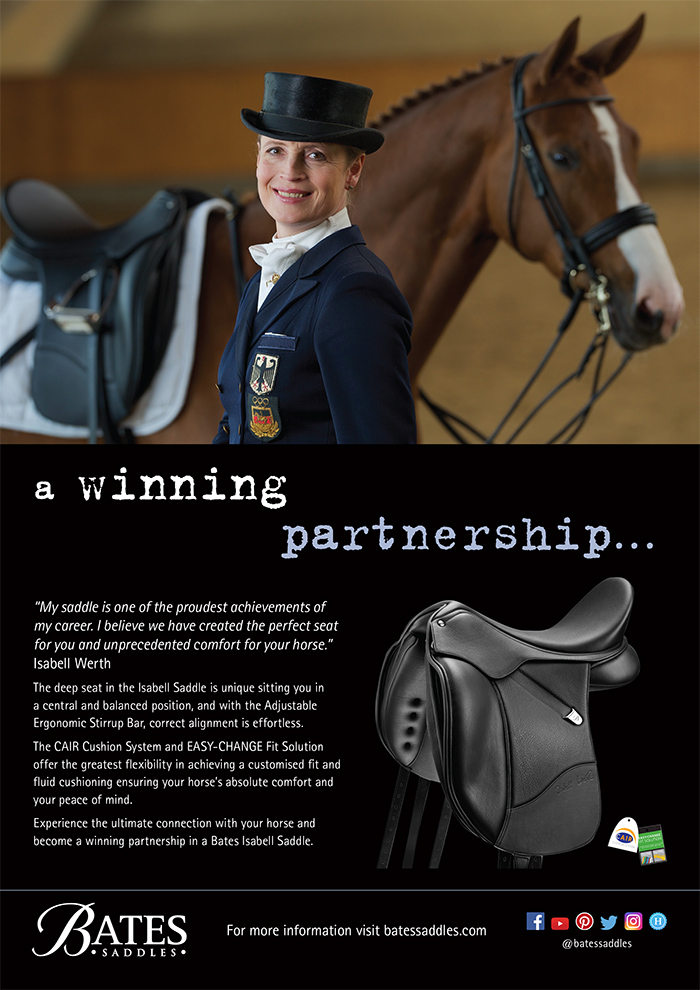
A good test to check if the collected work has been properly taught is to ask the horse to go forward after a period of collected work. The horse should move forward in a balanced even tempo with a loose swinging back; any stiffness resistance or falling onto the bit is a good indication of incorrect training or that collection has been asked too early in the horse’s training.
“I would have you understand, when a horse may properly be said to be upon his haunches, and when not. Suppose a horse to be almost sitting upon his croupe, he is not upon his haunches notwithstanding, if his hind legs are distant from the lines of nature (which is to have them much asunder) although he is almost upon his croupe. But to be upon his haunches, his hind-legs ought to be in their natural position, with the haunch-bone pointing directly forward, and his hind-legs under his belly, bending his hocks as much as possible; and this is the just situation of a horse upon his haunches.”
– William Cavendish, Duke of Newcastle
story continues below advertisement
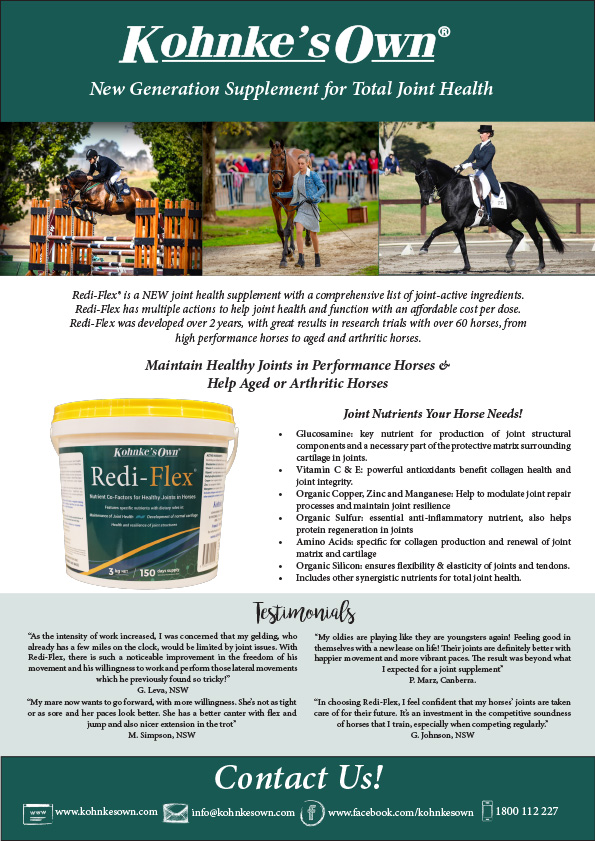
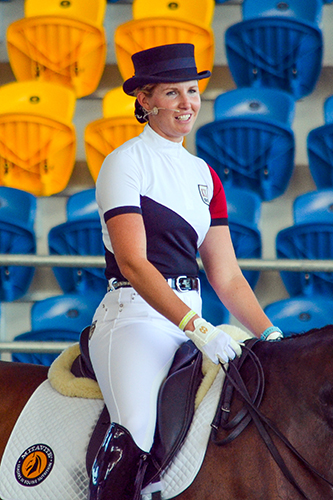 Rider No. 6, Alex Berns riding King’s Legend.
Rider No. 6, Alex Berns riding King’s Legend.
Alex is a young dressage rider, trainer and coach from Queensland; King’s Legend (Ledgy) is a 176.5cm, eleven-year old-Australian-bred Warmblood gelding by Cildara Conquest (Holstenier) /Warrego Windy. In 2010 Alex took Ledgy to train in Germany under the tutelage of Gaston Chelius and whilst there Alex also had the opportunity to train at the stables of both Hubertus Schmidt and Klaus Balkenhol. In the same year Alex and Ledgy won the Small Tour Champion at the Italian CDI. In 2011 the pair returned to Australia and won the Intermediate I Australian National Championship. Ledgy had a break of six months due to a ligament injury, returning to competitive work in July 2012. The pair recently gained a third place in the Intermediate II 2012 Australian National Championships and are currently on the National Dressage A squad.
Alex and Ledgy have entered the arena and are trotting and cantering in alternating circles. Steffen spends a few minutes quietly watching then turns to address the audience.
Steffen: “As Alex is an advanced rider, I would really like to talk about a point that I have seen too many times before with trainers who work with established riders on highly trained horses. That is they still want to come in and prove something, try to change the world all of a sudden. I think that it is really so important to try and understand why a rider will be riding a horse in a certain way first, before you try to make any changes. You really need to take a back step and understand that there is already a high level of communication and respect between the horse and rider and, even if straight away I see something that I would like to change, I feel that it is so counterproductive for me to come in and try to change that right away, especially if it might not make sense to the rider. I would like your opinion on this Jonah; do you have any comments to add when working with professional athletes at this level?”
Jonah: “I couldn’t agree more Steffen; the more advanced the athlete the more questions you ask. At this level coaching moves from an instruction-based relationship to one of questioning and problem solving, the feedback moves much more from a one-way to a two-way dialogue.”
Steffen: “Therefore I would like to ask you Alex to give feedback in between my instruction; as you ride could you tell me how that horse feels to you and explain what you do in your regular work to get your horse responding the way you want.”
Alex: “That would be great, he is still a very young Grand Prix horse and his confidence is still not a hundred per cent in his work and I have to be careful with him in this regard.”
Steffen: “So Alex what would you like to work on today?”
Alex: “The piaffe, or more accurately the collection required to go into the piaffe. He has a very big forward moving trot, very loose and elastic, but feels a little bit lazy in the piaffe. My experience in training piaffe is about the same as his experience in learning to piaffe. He doesn’t really understand the big moving trot into collection on the spot.”
Steffen: “Okay well I really like to keep my training very simple and the bottom line is that you only have three basic aids to use in teaching your horse and it is these aids that I would analyse to see where I am not being as clear and therefore effective as I need to be. You need to understand which of the aids is being ignored as that is the one we have to reinforce.”
“Again, I like to keep it that simple. So going back to first principles, Alex you have the horse moving forward nicely, he has a good rhythm and is also nice and straight, I really like the fact that you take care of this. Even though we are in the warm-up I see way too many horses that are allowed to be crooked and the riders think Oh well it’s only the warm-up I can take care of that later on and my question is, why? Why allow silly habits? It is the effort and the discipline that you put in now that really pays off later. So, I like the way you are collecting him, collecting on the circle, no problem, but the real test is on the centre line; testing the collection, testing the straightness. Too many riders are afraid of the centre line; I might not ride the pirouette every day at home but I always test the collection and the straightness on the centre line.”
Alex canters halfway up the centre line, executes a pirouette and canters on.
Steffen: “That’s good and now I want to see you test his lengthening, it doesn’t need to be an extended canter, just that you can lengthen him for a few strides and then bring him back. Think of a pendulum that swings both ways, on the one hand you have the high degree of collection and then you can push to the high degree of lengthening. So I would really like to see more of this in between your collected work, more of the big ground covering strides. Collection should not be our priority – the quality of the gait should be our priority, collection for collection’s sake, can sometimes be a little bit over rated!”
Now there is something to think about.
story continues below advertisement
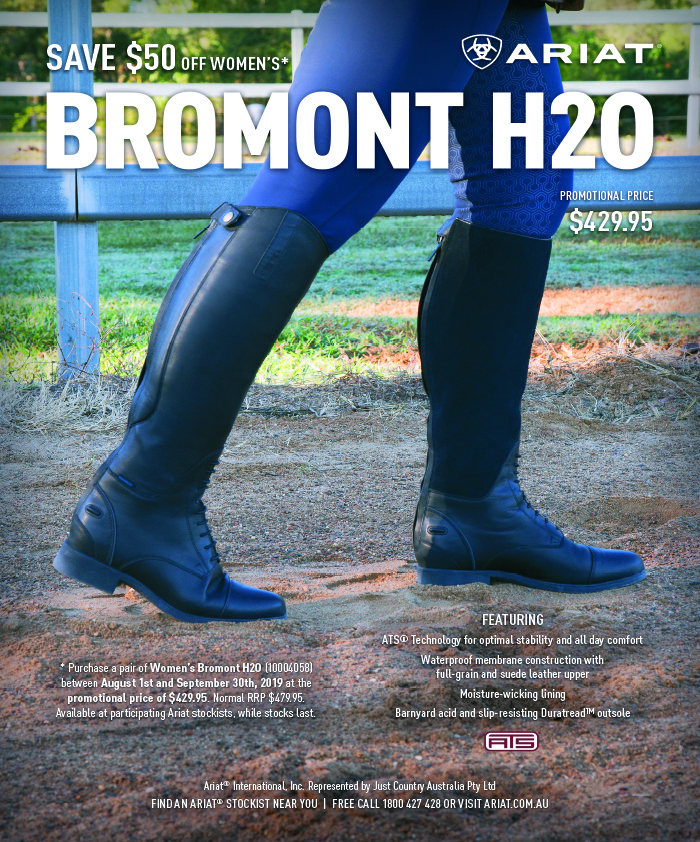
Steffen on Deep and Round
Alex is riding Ledgy quite deep and round, partly due to the training she received in Germany where she was encouraged to ride him this way to help strengthen his back and partly because he has been out of work for six months or so and Alex has only recently brought him back in to serious training.
Steffen: “Alex, walk one second because this is quite important, riding him deeper and building up the back muscles is very important, but I really want you to keep in mind that if he puts the right effort into movement, such as the canter pirouettes, the piaffe and passage, all done in moderation with breaks in between, these movements can be very strengthening too.”
“Let’s put it this way, when I go into the show arena I’d much rather have the feeling that my horse is just a little bit too high, so then it is my job to make him a little bit rounder. I prefer that feeling instead of having a horse that wants to be too deep and I constantly have to struggle to get him up there. So no doubt you have been taught to ride him like that to make him stronger and I don’t want to come and insist you make changes, but just make sure that you have the capability, that you have the strength, to bring him up at any time.”
Alex: “That’s what I have really been working on lately, getting him more up and he has been coming up nicely, but I know he needs to be higher for Grand Prix and he really tries.”
Steffen: “Well he certainly looks strong enough, his back looks good and my point is that if you need to ride him deeper, do so, but do it because of a true necessity. If he feels a little tight in the back, that he wants to brace a little bit, then let’s spend the next five to ten minutes working deep and round, maybe even deeper than you are at the moment, make your point, but don’t be afraid to bring him up and work him up as well; this will strengthen him if he is both straight and forward. So Alex I want you to ride him deeply when you feel the need, but in the meantime I would really like to see you to bring him a little bit up as well.”
The weight must be evenly distributed, the horse leaning neither more to the forehand nor balanced more on the hindquarters in order to be considered collected.
Essential to collection as well is the complete lack of resistances, as well as the maintenance of superior impulsion, and absolute submission.
The loins, hindquarters and hocks become flexible, the hocks push the horse’s mass energetically ahead as the movement of the shoulders becomes free and graceful. The head and neck are placed high, and the lower jaw gives way at the slightest pressure of the rider’s fingers.
The horse should be so well balanced that the rider can ask any movement already taught with the minimum of effort, obtaining great promptness of execution.
I bow to the rider who, indifferent to his surroundings, works his horse to his own satisfaction, and having tried to attain his ideal, terminates the lesson, dismounting from the horse content and yet, at the same time, dissatisfied because he feels his achievement to be far from the ideal.
– Nuno Olivera
 Jonah on Competence and Confidence
Jonah on Competence and Confidence
Steffen: “Alex you were explaining a situation you experienced recently in a competition and I wonder if you would share it? I would like to invite Jonah to comment as I think it would be really beneficial to the audience.”
Alex: “I have always been very confident in competitions; I’ve always gone in with an I am going to kill you all attitude, which has always been to my benefit. Going up a level into Grand Prix, it’s a big leap and with my lack of experience and such a talented horse underneath me I was experiencing a few training problems that I really didn’t know how to fix. This resulted in the horse losing his confidence in the arena, which made me lose my confidence. Then for the first time in the Queensland State Championships I had a problem in the warm-up, a horse upset him and he completely exploded! I just shut down and I retired mentally before even entering the arena. I rode the test; the horse stepped up to the plate and actually did the test for me and when I left the arena someone said, ‘that was a really good ride,” and I just looked at them blankly – I had absolutely no idea, no recollection at all of how that ride just went – it was like I just wasn’t there. That was really a first for me. I just cannot remember the ride at all.”
Jonah: “Ok, pretty strong emotions then and thanks for sharing that. Alex I hear you talking a lot about your confidence and your horse’s confidence. I wonder if you could tell me what it looks like?”
Alex: [looking rather astounded at this question] “What does it look like?”
Jonah: “Yeah well you must know, because you had it, your horse had it, then he lost his and you lost yours – what colour is it?”
Alex: [looking for all the world like Jonah has gone completely bonkers] “What colour is it?”
Jonah: “Well if you describe it for me a little bit, I’ll go and look for it for you. [Adopting an air of grave concern] Alex, I am regarded as something of an expert in confidence, explain to me what yours looks like, and your horse’s for that matter and I’ll hunt them down and find them for you.”
Alex, getting the point, laughs with the rest of the audience.
story continues below advertisement
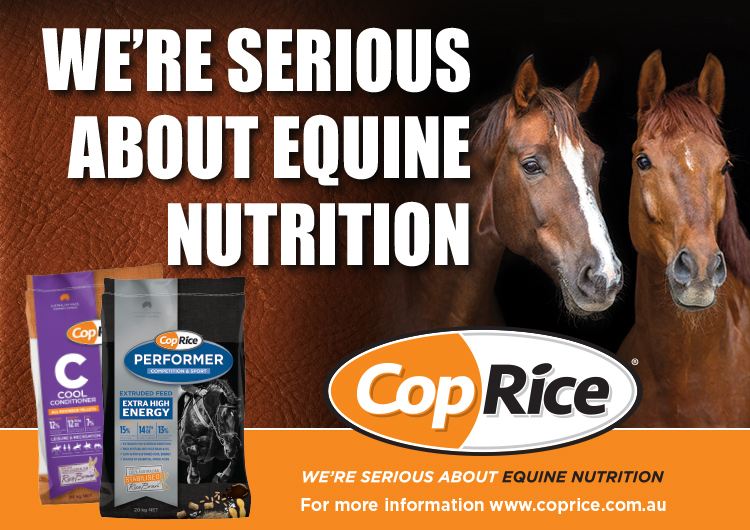
Jonah: “Alex, I’ll make you a deal, if you can come and ride in the arena with competence, I will (free of charge) find your confidence. I don’t care how you feel; if you’re worried or scared, provided you face up to the reality that your confidence is lost and that you just need to be competent. I want you to focus on what you do in training, what you and the horse are capable of doing; if you do that with one hundred per cent purpose and clarity, no matter what errors and mistakes may come up, you stay riding with that commitment and focus on competence. Then let’s meet outside the arena at the end of the test and see who found your confidence first.” 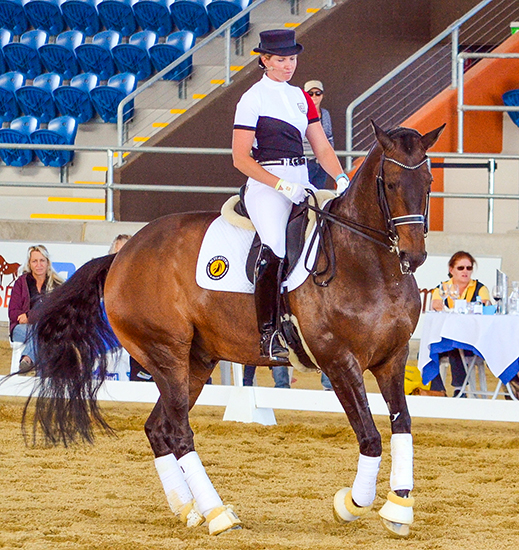
Alex: “That’s a good point and I think, without realising it, that is exactly what I did recently at the Nationals. I took the approach that I just needed to shut out all thoughts of the competition and just focus on what I did in training. I pretended that I was riding in my arena at home and I think I rode as well as I ever have.”
Jonah: “There is a really strong take home message here folks – don’t wait to feel good before you act good – act good to make you feel good! So change you language and no more mention of your confidence, or your horse’s confidence. You don’t need to be confident, you need to be competent!”
“And on that note overconfidence is just as dangerous as under confidence, either way you are relying on emotion. Emotion can take away the ability to focus on what you need to do by moving the focus to what you feel. Stop focussing on feelings, focus only on what you need to do. This is also a really important part of training and just like practicing and perfecting movements, developing mental toughness improves with practice. Mentally tough athletes perform consistently and stay task focussed. Any athlete can ride well when they feel confident, great athletes ride well, irrespective of how they feel.”



